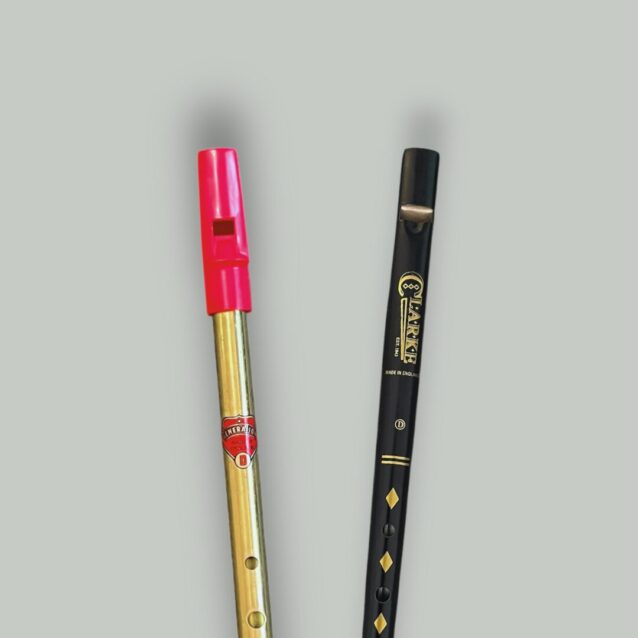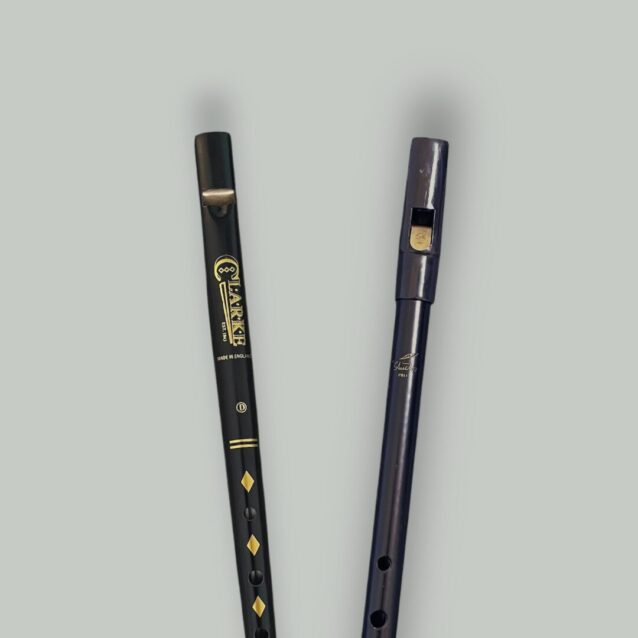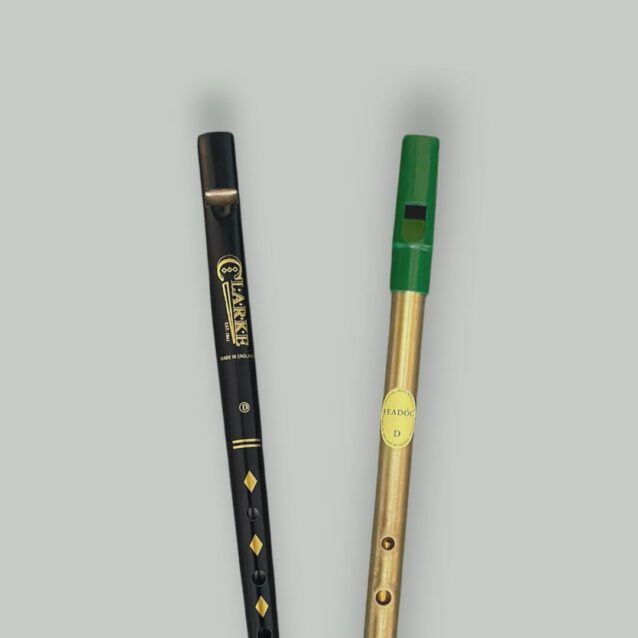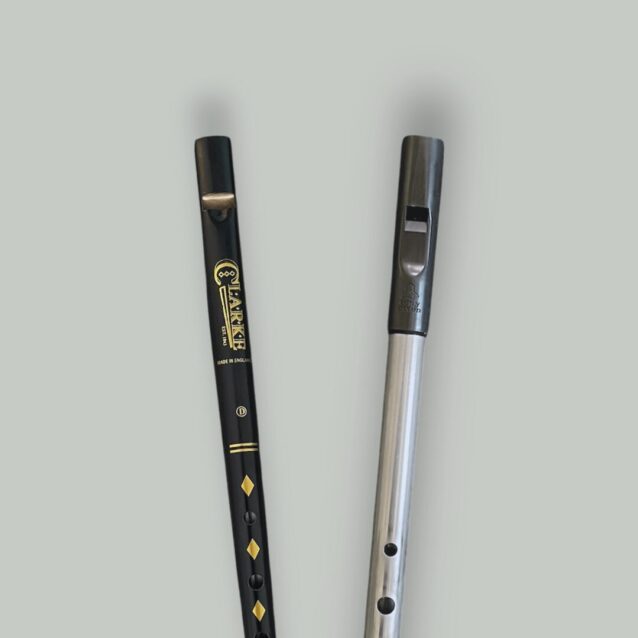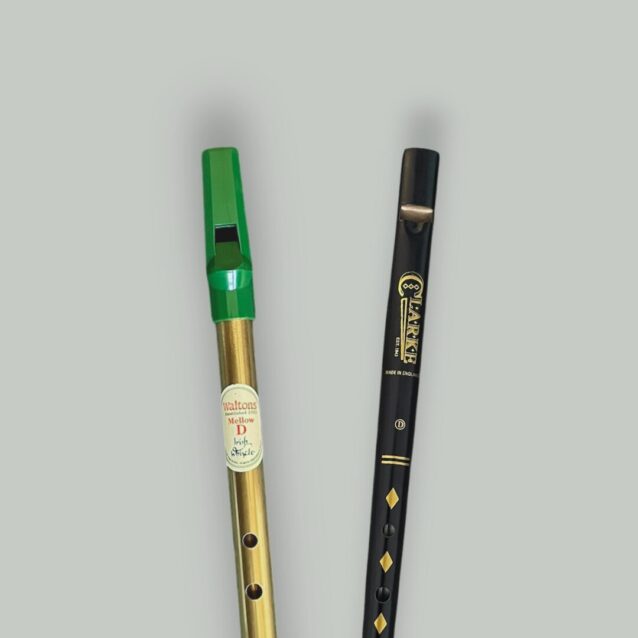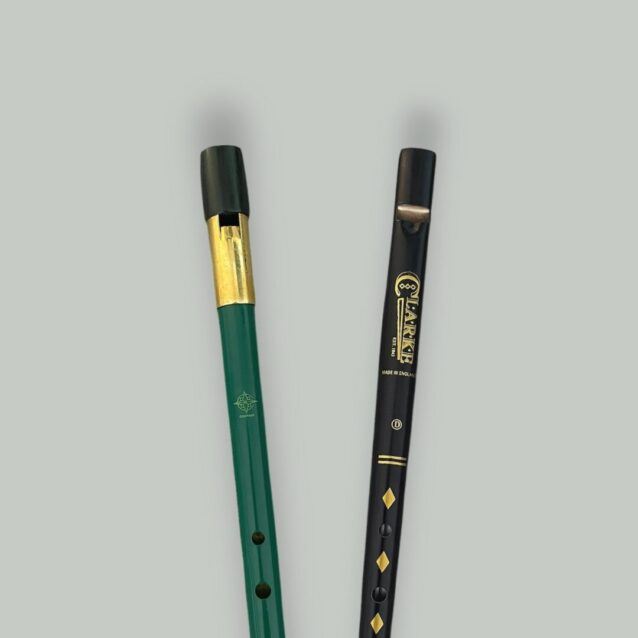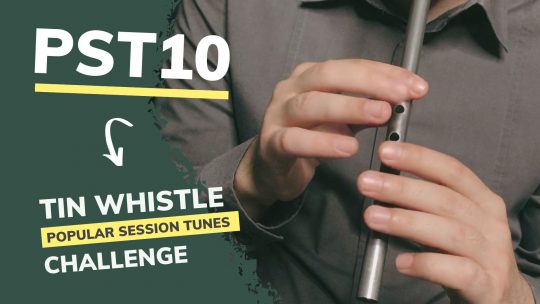The Clarke tin whistle is one of the oldest names in the tradition, first made in England in 1843 by Robert Clarke, a farm labourer who went on to establish the company. Known for its distinctive look and long history, Clarke whistles have remained popular for generations. In this review, we’ll be looking at the so-called Original model and see how it performs and what makes it unique among today’s options.
Design & build
| Model: | Clarke “Original” |
|---|---|
| Key: | D (high/soprano) |
| Material: | Tin (painted) |
| Mouthpiece: | Wood |
| Windway type: | Curved-flat |
| Length: | 290mm (11.42″) |
| Weight: | 33g (1.16oz) |
| Bore diameter: | Conical |
| Tuneable: | No |
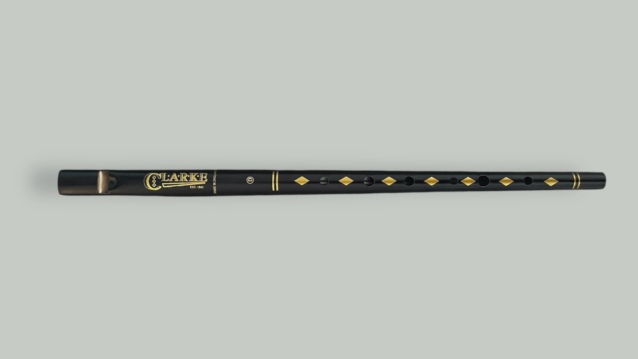
One of the first things you notice about the Clarke whistle is its distinctive look, with a tapered bore construction. In many ways, it lives up to the name “tin whistle” more than most, since this model is literally made of tin. The body is painted in a matte black finish with a diamond pattern for a more elegant appearance.
This is the so-called Original model, though Clarke occasionally releases other variations with different colors and designs. It’s worth noting that these variations do not affect the sound — at the core, it’s still a painted tin body.
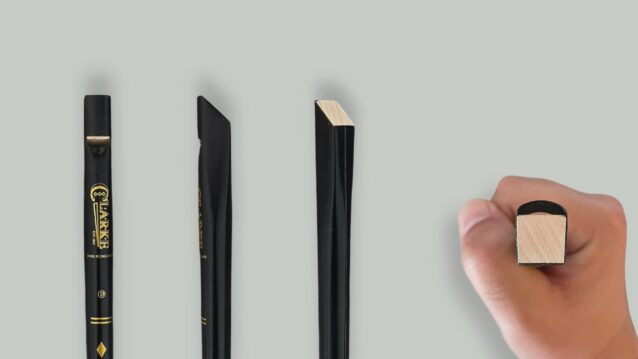
Another distinctive feature is the mouthpiece, which is formed by a wooden plug around which the tin is folded. It has a relatively wide curved-flat windway, giving the air passage a more spacious feel compared to many other whistles.
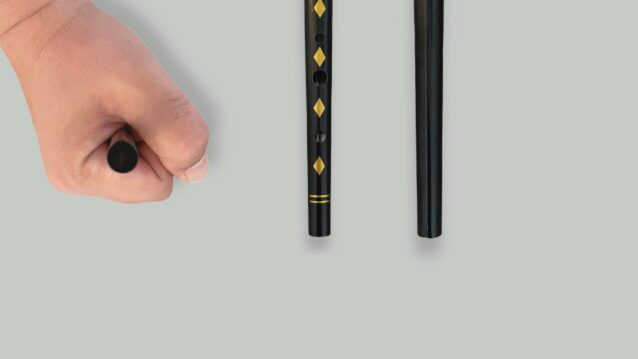
This very basic design means the whistle is not tuneable. The folded tin also creates a seam along the back, which some players might find uncomfortable to hold. On the other hand, not a big issue since the whistle is very light, and the matte finish keeps it from feeling slippery.
Clarke – Sound samples and demonstration
The video below features samples from both octaves, starting with slower melodic phrases and then moving into faster tunes to show how the Clarke whistle responds in different playing contexts.
In the recordings, you can hear that the Clarke Original has a very distinctive sound with a soft and mellow character, with quite a bit of air escaping along with the fundamental tone. Because of this character, the whistle tends to shine more in slower melodies than in fast dance tunes, which usually benefit from a more direct and focused sound. Ornamentation is audible, but comes across as more subdued, just like the overall tone.
The whistle is objectively quiet, and the subjective impression is that it feels even quieter due to the softness of its sound and the lack of punch.
Intonation is solid, though, as noted earlier, the whistle cannot be tuned since it is made as a single piece. The C natural comes out correctly with the common “OXXOOO” fingering.
How it handles from a player’s perspective
From a playability aspect, the Clarke Original is quite air-inefficient. You’ll find yourself needing to take breaths more often, it simply “leaks.” Compared with other tin whistle reviews, this frequent need for air is easy to notice in the video examples.
In that sense, it’s very easy to blow, but it also feels like there is no backpressure. On the one hand, that means the whistle can’t really be overblown to the point of breaking, but on the other hand, it also offers very little control. For players coming from other wind instruments, this will probably feel strange and unnatural.
One advantage is that it can serve well as a practice whistle, since it’s generally quieter than most entry-level models. The volume is also nicely balanced between the octaves where the upper notes are softer and not drastically louder than the lower octave as is the case with many other whistles.
Also, one potential downside is durability. The fipple uses a wooden block that constantly absorbs moisture, so you really need to let it air-dry after each playing session. Otherwise, it can wear out sooner than later if played on a regular basis.
To wrap things up, this might not be the best choice as a very first whistle for someone just starting out (especially if you have any breath control issues). Where it does make sense is as a secondary instrument, when you specifically want that unique airy sound. It can also work well as a nice gift, thanks to its attractive and traditional look.
Your thoughts?
Have any questions or impressions about the Clarke whistle? Feel free to drop a comment under the Clarke tin whistle review video on YouTube. We check in regularly and are always happy to chat, answer questions, or hear your experience with the whistle!
Clarke whistle sound comparisons
Below are a few quick sound comparisons between the Clarke and other tin whistles. Each clip is recorded using the same microphone and settings to give a fair impression of tone and character, with raw, unprocessed sound.
View more Clarke whistle comparisons
Please note: due to YouTube’s automatic audio normalization, real volume differences between whistles are effectively removed. That’s actually helpful in this case — since louder sounds are often perceived as better to the human ear on a subconscious level, this allows you to focus more objectively on tone, texture, and response.
Where to buy this whistle
If you’re interested in picking up this whistle, here are a few trusted places where you can find it. Prices typically range around $20-$30, depending on the shop, region, and packaging type.
- BigWhistle (UK, ships worldwide)
- Clarke (UK, ships worldwide)
- Clarke USA (US, ships worldwide)

